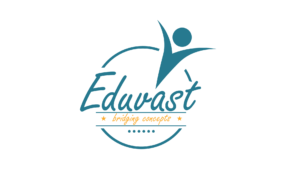IRA vs. 401(k): Contribution limits and investment alternatives are dissimilar. 401(k) plans and individual retirement accounts (IRAs) are the two primary retirement savings options. When employers want to provide their employees with a tax-advantaged method to save for retirement, they may offer defined-contribution plans such as 401(k)s.
Typically, employees contribute a portion of their salary to their 401(k), and employers may offer matching contributions up to a certain limit. Employers with 100 or fewer workers may also offer a simplified employee pension (SEP) IRA or a Savings Incentive Match Plan for Employees (SIMPLE) IRA.
Individuals can choose to save on their own and establish an IRA (they can have both a 401(k) and an IRA), but IRAs do not offer matching contributions from employers. Different varieties of IRAs have distinct contribution and income limits, as well as their own tax advantages. Both traditional IRAs and 401(k)s grow tax-free, meaning that there is no tax on interest and earnings over time; however, distributions or withdrawals from these accounts are typically taxed at your then-current income tax rate in retirement.
Nevertheless, there are IRAs that allow tax-free withdrawals during retirement. The Internal Revenue Service (IRS) imposes a tax penalty for early withdrawals from most IRAs and 401(k)s if the account holder is younger than 59 12 years old. Again, there may be exceptions to the early withdrawal penalty contingent on the specific retirement account and a person’s financial circumstances.
5 Simple Personal Finance Hacks for Effective Budgeting: Boost Your Savings
401(k)s
IRA vs. 401(k): A 401(k) is an employer-sponsored tax-deferred retirement savings account. Employees fund their 401(k) accounts through elective salary deferrals, in which a portion of their pay is withheld and contributed.
Sponsor-selected investments, typically a portfolio of mutual funds, are used to invest the funds. The fund options are tailored to a particular risk tolerance, allowing employees to take on only as much aggressive or prudent risk as they are comfortable with. Investment income is tax-free and compounding.
Additionally, many employers offer Roth 401(k)s. Contributions are funded with after-tax dollars, so they are not tax deductible; however, qualified withdrawals are tax-free.
401(k) Contribution Limits 2023: All You Need to Know
Volunteer Contributions
Contributions to 401(k) accounts are made before taxes, thereby reducing your taxable income for the year by the amount of the contribution.
For instance, if an employee earned a salary of $50,000 and contributed $10,000 to a 401(k), the employee’s taxable income for the year would be $40,000, assuming all other factors remain constant.
For 2022, participants can contribute up to $20,500 annually to a traditional or Roth 401(k), with an additional catch-up contribution of $6,500 permitted for those 50 and older. Individuals may now contribute up to $22,500 plus an additional $7,500 in catch-up contributions beginning in 2023.
Employer Contribution Matching
Typically, employers will match a portion of their employees’ contributions up to a specified limit or percentage. An employer may contribute an amount equal to the employee’s annual contribution. For instance, an employer may match 50% of an employee’s contribution up to 6% of his or her salary.
If an employee contributes 6% of compensation, the employer will match that contribution with 3%.
In certain situations, employers may merely state a matching policy that is effective up to but not exceeding IRS limits. For instance, an employer may offer a 50% match on all 401(k) contributions up to the contribution limit. In this case, an employer may contribute up to $11,250 in 2023 (equal to 50% of $22,500).
If the employee does not contribute the complete 6%, they may not be eligible for an employer match and will receive either nothing or a reduced amount. The employee may be required to contribute a minimum amount or percentage of their salary in order to receive the employer match. It is essential to examine the 401(k) retirement plan documents to determine if an employer match exists and, if so, what the maximum match and minimum employee contribution are to qualify for a match.
The IRS has established limits on employee and employer contributions to a 401(k). The maximum contribution limit for 2023 is $66,000, or $73,500 with catch-up contributions. Alternately, the total 401(k) contribution cannot exceed the participant’s total compensation.
Distributions From 401(k)s
IRA vs. 401(k): Withdrawals are taxed at the individual’s marginal income tax rate, and there is no penalty for withdrawals if they are made at age 5912 or older.
IRAs: Individual Retirement Accounts
Individual retirement accounts (IRAs) are tax-deferred retirement savings accounts established by individuals. Banks, brokerages, and investment firms can hold IRAs.
An IRA can be as simple as a local bank savings account or certificate of deposit (CD). IRAs held by brokerage and investment firms offer more investment options than 401(k)s, including equities, bonds, certificates of deposit, and real estate. According to IRS regulations, certain assets, including art, cannot be held within an IRA.
Contribution Limits for IRAs
In 2022, the annual contribution limit for traditional and Roth IRAs is $6,000, with an additional $1,000 catch-up contribution permitted for those 50 years or older. Individuals can now contribute up to $6,500 in 2023, with a catch-up contribution of an additional $1,000.
Traditional and Roth Individual Retirement Accounts
Similar to 401(k) contributions, traditional IRA contributions are typically tax-deductible. Earnings and returns grow tax-free, and withdrawals in retirement are taxed. Roth IRA contributions are made with after-tax dollars, so there is no tax deduction in the year of the contribution. However, qualified Roth IRA distributions are tax-free in retirement.
IRA Advantages
Employer-sponsored plans typically provide a matching contribution. Your individual plan allows you to choose from a menu of mutual funds or exchange-traded funds (ETFs). IRAs are not linked to employers. If your income is below a certain threshold and you are not covered by an employer plan, you can contribute up to $6,500 annually plus an additional $1,000 if you are 50 or older.
The advantage of an IRA is that your investment options are substantially expanded and nearly limitless. The costs of each must be considered, and they will differ based on the chosen investment.
Certified Financial Planner Michelle Mabry, Client 1st Advisory Group, Hattiesburg, Mississippi
Distributions From IRAs
IRA vs. 401(k): Similar to 401(k) plans, IRA holders can commence withdrawals at age 59 12. Before that age, withdrawals are subject to a 10% tax penalty unless you qualify for a hardship withdrawal. Importantly, unlike 401(k) plans, the IRS does not permit you to borrow against your IRA account balance.
Key Distinctions
The following table explains the primary differences between 401(k) plans and individual retirement accounts.
| 401(k) Plan | Individual Retirement Account | |
| Annual Contribution Limits (if younger than 50) | $22,500 | $6,500 |
| Catch-up Contribution Limits (if older than 50) | $30,000 | $7,500 |
| Contribution Source | Contributions automatically deducted from paycheck. Employer may match contributions. | Account owners must fund their own accounts. |
| Choice of Assets | A few funds chosen by the plan administrator | A wide universe of stocks, mutual funds, index funds, and other assets. |
| Creation | Set up by employers | Set up by account holders. |
| Types of Accounts | Roth and traditional 401(k) | Traditional, Roth, SET, and SIMPLE IRAs. |
| Required Minimum Distributions | Start in the year you reach 73 or 75 depending on the year you were born. | Start in the year you reach 73 or 75 depending on the year you were born. (Roth IRAs are not subject to required minimum distributions.) |
IRAs SEP and SIMPLE
SEP and SIMPLE IRAs are offered by employers to their employees and are similar to 401(k) accounts in a number of ways, but their contribution limits are the most significant difference.
SEP and SIMPLE IRAs were created to facilitate the establishment of an employee retirement plan by employers. They have fewer administrative responsibilities than 401(k)s. The term employer incorporates an owner/employee in the context of self-employment.
SEP IRAs
IRA vs. 401(k): SEP IRAs have higher annual contribution limits than traditional IRAs, and only your employer is permitted to make contributions. Employer contributions can be up to 25% of an employee’s gross annual compensation, up to a certain limit. In 2022, the annual contribution limit is $61,000 (or $67,500 for those over 50). In 2023, the maximum annual contribution will be $66,000 (or $73,500 for those over 50).
Simple IRA accounts
Contributions to a SIMPLE IRA differ from contributions to SEP IRAs and 401(k)s. Employers can either match up to 3% of an employee’s annual contribution or make a 2% contribution of each employee’s compensation. The latter does not require contributions from employees.
In 2022 and 2023, the contribution limit for employees is $14,000 and $15,500, respectively. The maximum catch-up contribution for those aged 50 and older is $3,000 in 2022 and $3,500 in 2023.
Which Is Better: a 401(k) or an IRA?
Whether a 401(k) or an IRA is superior for a particular individual is dependent on that individual’s specific circumstances. A 401(k) allows for greater annual pretax contributions than an IRA; however, an IRA typically offers more investment options, allowing for greater account control and flexibility. Note that a person can possess both.
A 401(k) is an IRA?
Both accounts are vehicles for retirement savings, but a 401(k) is a form of employer-sponsored plan with its own rules. A traditional IRA, on the other hand, is an account established by the proprietor without employer participation.
Is a 401(k) tax-wise equivalent to an IRA?
Not all retirement accounts are taxed in the same manner. The tax benefits for IRAs and 401(k)s are distinct. Roth IRA contributions are not tax-deductible, but retirement withdrawals are tax-free. Traditional IRAs offer a tax deduction, whereas 401(k)s permit the deposit of pre-tax income, which reduces taxable income in the contribution year. 401(k) and IRA distributions in retirement are considered taxable income.
12
Can You Lose Money in an Individual Retirement Account?
Yes. IRA funds held by a brokerage or investment firm are typically invested in volatile securities such as mutual funds or equities. Note that an IRA is no more or less likely than any other investment account to lose value. The proprietor of an IRA is subject to the same market risks as the owner of a 401(k) account.
Can a 401(k) be rolled into an IRA penalty-free?
IRA vs. 401(k): The IRS permits a rollover or transfer of funds from a 401(k) to an IRA; however, the IRS’s process and guidelines must be followed so that the IRA transfer does not count as a distribution, which could incur a penalty. A direct rollover is the simplest method to transfer funds without incurring a penalty.
Both IRAs and 401(k) plans are excellent investment vehicles with distinct advantages. Because a 401(k) is an employer-sponsored plan, you may have fewer investment options, but the contribution limits are significantly higher than in a traditional or Roth IRA. Ideally, you can combine the two accounts to build a retirement portfolio that will allow you to relax and appreciate your golden years.
Commerce on the Go. Anytime, Anywhere
You have access to one of the world’s largest crypto-asset exchanges. Profit from competitive fees and devoted customer service while trading safely. In addition, you will have access to Binance tools that make it simpler than ever to view your trade history, manage auto-investments, view price charts, and perform fee-free conversions. Create a free account and join millions of crypto traders and investors on the global market.



